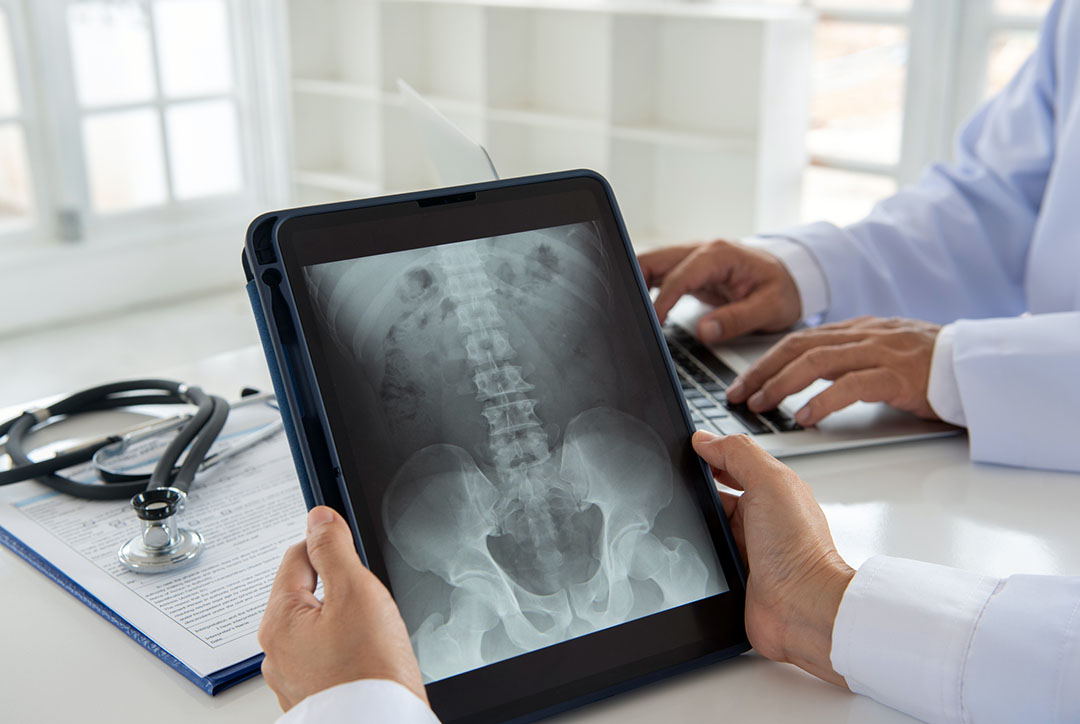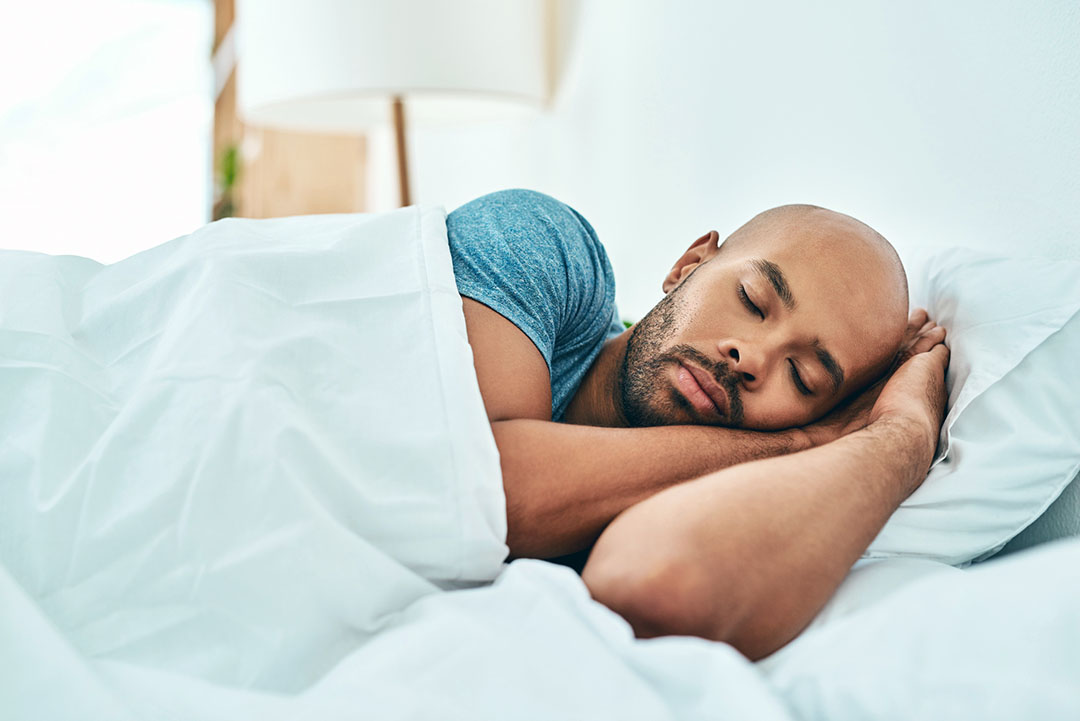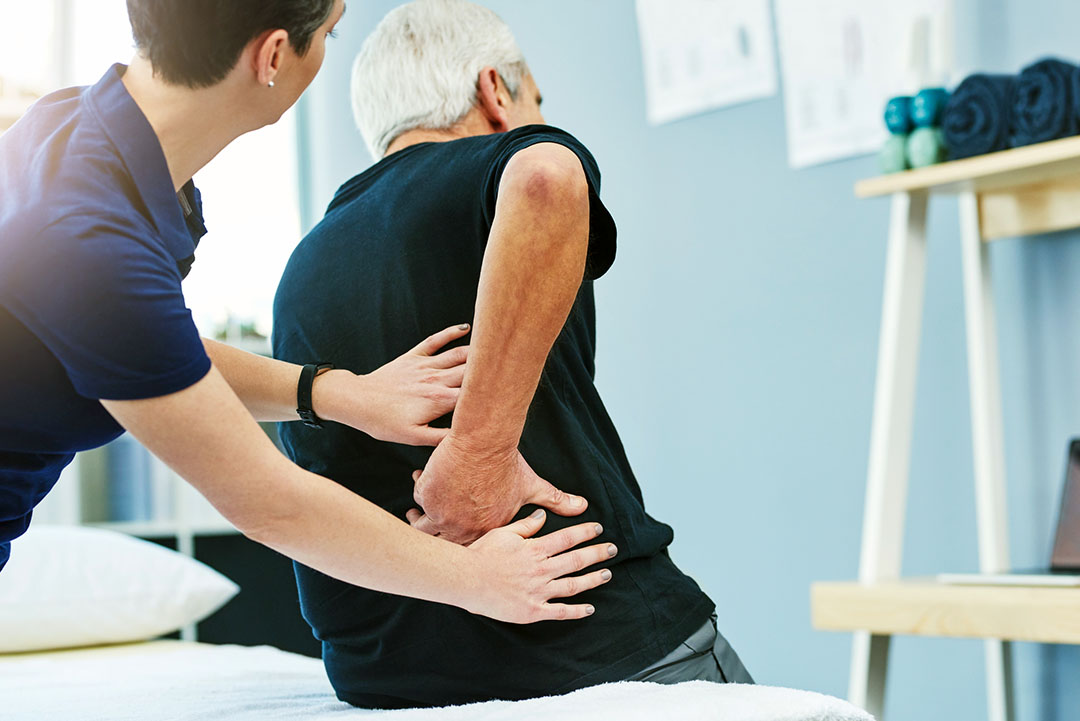Low back pain is one of the most common reasons people visit their doctor. In fact, this year alone, it is estimated more than half of the adult population will be affected by low back pain, and more than ten percent will deal with frequent bouts of it. That’s why we’re unpacking everything you need to know about low back pain including why it’s so common, who is at risk, what you can do to help prevent it, and how to get lasting relief.
Why Low Back Pain is So Common
Your lower back is more susceptible to injury and pain than your thoracic spine because – just like your neck – it doesn’t have your rib cage to support and stabilize it. And that’s a good thing! It’s what allows us to have the mobility needed to touch our toes, tie our shoes, and pick things up off the ground.
As long as your low back is healthy and functioning correctly, it can withstand tremendous forces without injury. Look at professional powerlifters who can pick up several hundred pounds off the floor. However, if the low back is out of adjustment or has weakened supporting muscles, that’s when pain and injuries can pop up. Something as simple as taking a bag of groceries out of the trunk of their car or bending down to pet the dog can cause a low back injury.

Who is at Risk for Low Back Pain?
Anyone can develop low back pain, including kids and teens. There are a few factors, however, that could put you at a higher risk of developing it in the future. This includes:
- Age (starting in your 30s and 40s)
- Weak back and abdomen muscles
- Excess weight
- Flat or fallen arches
- Improper lifting
- Smoking
4 Common Causes of Low Back Pain
Many different conditions and activities can cause low back pain. While sports injuries or accidents can lead to injury, sometimes even the simplest movements, like picking up a pencil from the floor, can have painful results. Sprained ligaments, strained muscles, ruptured disks, trigger points, and inflamed joints are often the most common cause of back pain. But conditions such as arthritis, poor posture, obesity, psychological stress, kidney stones, kidney infections, blood clots, or bone loss can also put you out of commission with a bad back.

Here are some of the most common causes of low back pain that AlignLife Chiropractors see in our clinics:
Subluxations
Whenever there is a disruption in the normal movement or position of the vertebrae (also known as a subluxation), the result is pain and inflammation. In the lumbar spine, this usually occurs at the transition between the lower spine and the sacrum. Subluxations can lead to debilitating low back pain. Fortunately, subluxations are easily treatable. In fact, we’re often able to provide you with a significant reduction in pain almost immediately after treatment.
Disc Herniations
Contrary to popular belief, a herniated disc does not automatically mean that you are going to suffer from low back pain. In fact, one study found that almost half of all adults had at least one bulging or herniated disc, even though they did not suffer any back pain from it.
On the other hand, herniated discs can be a source of intense and debilitating pain that frequently radiates to other areas of the body. Unfortunately, once a disc herniates, they rarely, if ever, completely heal. Further deterioration can often be avoided through regular chiropractic care, but a complete recovery is much less common.

Stress
Stress is also a common cause of back pain. Whenever you become stressed, your body responds by increasing your blood pressure and heart rate, flooding your body with stress hormones, and tightening up your muscles. When you are stressed all the time, the chronic tension causes your muscles to become sore, weak, and loaded with trigger points.
Sprains, Strains & Spasms
Back sprains, strains, and spasms are another common cause of back pain, and it’s often seen with weekend warriors (you know who you are). Your MO consists of little physical activity during the week because of time constraints or hours at a desk. But once the weekend arrives, you push yourself way too much. You overwork your low back muscles or ligaments, leading to small tears in the tissues that become painful, swollen, and tight. By the end of the weekend, you are lying flat on your back, counting down the hours before you can get in to see your chiropractor.

10 Healthy Habits to Prevent Chronic Back Pain
Minor lifestyle changes can make all the difference in maintaining lifelong back health. Here are a few simple actions you can take to help prevent back pain from happening or making it worse. The mindset behind many of these is to relieve pressure, reduce strain, protect your spine, and strengthen your muscles.
1) Work your core.
Increasing your strength and endurance with regular low-impact aerobic activities can go a long way toward helping you keep your back healthy. Walking, swimming, and yoga are all great exercises that won’t strain or jolt your back. Building up your core muscles with targeted exercises can also help create a natural corset for your back. Check out these exercises specifically designed to help your back, or talk with your alignlife doctor about activities you could try.

2) Check your shoes.
Proper arch support is vital for improving how your body moves, feels, and functions. The reason for this? When your arch drops, it can throw your body’s whole foundation off. Your knee can twist, your hip can drop, and it can open you up to new backaches, pains, and potential injuries that are entirely avoidable. Learn more about how your feet should be supporting you in this article and ask us about doing a foot assessment the next time you’re in!
3) Improve your sleep posture.
One of the top ways to improve or prevent back pain at night is by making sure your bed and pillow offer proper support. Your sleep posture can also help. Because not everyone enjoys the same sleep position, here are some tips on how to help you get a better night’s rest while still supporting your back:

- Side-sleeper. Sleeping on your side with a pillow between your needs can help provide prevent and provide relief from back pain. The pillow between your knees is key here, however, as it helps keep your hips, pelvis, and spine in alignment.
- Fetal position. Rolling on to your side into the fetal position can also help relieve pressure on your spine and open up the space between your vertebrae. This position is especially helpful if you have a herniated disc.
- Stomach sleeper. While not an ideal position because it can put a strain on your neck, stomach sleepers can also find relief by placing a pillow under their hips. You may not need a pillow for your head in this position to be comfortable.
- Back sleeper. If lying on your back is how you prefer to sleep, try placing a pillow underneath your knees to keep your spine neutral. You may also want to add a small rolled-up towel underneath the small of your back for added support.
4) Maintain a healthy weight.
Carrying extra weight, even if it’s just 10 or 15 pounds, puts extra strain on your back. Getting down to a healthy weight and staying active will help keep your back from going out in the future. Ask us how AlignLife Can help you meet this health goal.
5) Stretch more.
Weekly yoga or daily stretching can also help with low back pain because it helps increase flexibility and ease tension in your lower back and core muscles. Here are a few gentle stretches you could try at home, or feel free to ask your AlignLife Chiropractor for stretches they recommend for you. If at anytime the pain increases during these stretches, stop immediately and ask your health provider before continuing.
6) Lift smart.
Try to avoid heavy lifting. But, if that isn’t possible, make sure you always lift with your legs and not your back. Tugging on heavy objects with your back muscles is a guaranteed way to end up with a sprain, strain, or worse. Best practice: keep your back straight, bend only at the knees, and hold the weight close to your body. Better yet, find a lifting partner to help offload some of the weight!

7) Straighten up.
Daily posture plays a big role in how healthy your back is! If you’re standing, don’t slouch, and work to keep your hips in a neutral position. Shift your weight from foot to foot if you have to stand for long periods of time, or place a foot on a footstool to help relieve some of the load off your back.
8) Sit properly.
The same principle on posture rings true if you’re sitting. If you sit at a desk most of the day, choose a chair that supports your lower back and keeps your hips and knees level. You can also try adding a pillow behind the small of your back to help you maintain its natural curve.
9) Up your calcium and vitamin D.
Osteoporosis is one of the most common causes of back pain later in life. Strong bones can help you prevent this. In addition to taking quality, clinically inspired supplements like Bone Matrix or Active-D from Aceva, you can also get calcium and vitamin D from the foods you eat. Some foods rich in calcium include milk, yogurt, and leafy greens. Some foods rich in vitamin D include fatty fish, egg yolks, and mushrooms.

10) Stop smoking.
Smoking has been shown to increase the risk of low back pain as well. This risk increases if you smoke more cigarettes per day. If you’re ready to stop smoking, ask your AlignLife Chiropractor how we can help support you in reaching this health goal and reduce your overall risk.
How to Get Lasting Relief from Low Back Pain
Until recently, researchers believed that back pain would heal on its own. We have learned, however, that this is not true. Recent studies showed that when back pain is not treated, it may go away temporarily, but will most likely return. It is important to take low back pain seriously and seek professional chiropractic care. This is especially true with pain that recurs over and over again.
Chiropractic care has repeatedly been proven to be the most effective treatment for low back pain. In fact, major studies have shown that chiropractic care is more effective, cheaper, and has better long-term outcomes than any other treatment! This makes sense because chiropractic care is the only method of treatment that serves to re-establish normal vertebral motion and position in the spine. All other treatments, such as muscle relaxants, pain killers, and bed rest, only serve to decrease the symptoms of the problem and do not correct the problem itself.
So if you find yourself dealing with back pain, day after day, schedule a visit at a local AlignLife center near you. We’ll create a personalized plan for you that will show you the difference chiropractic care can make in helping you get out of pain and meet your health goals.




